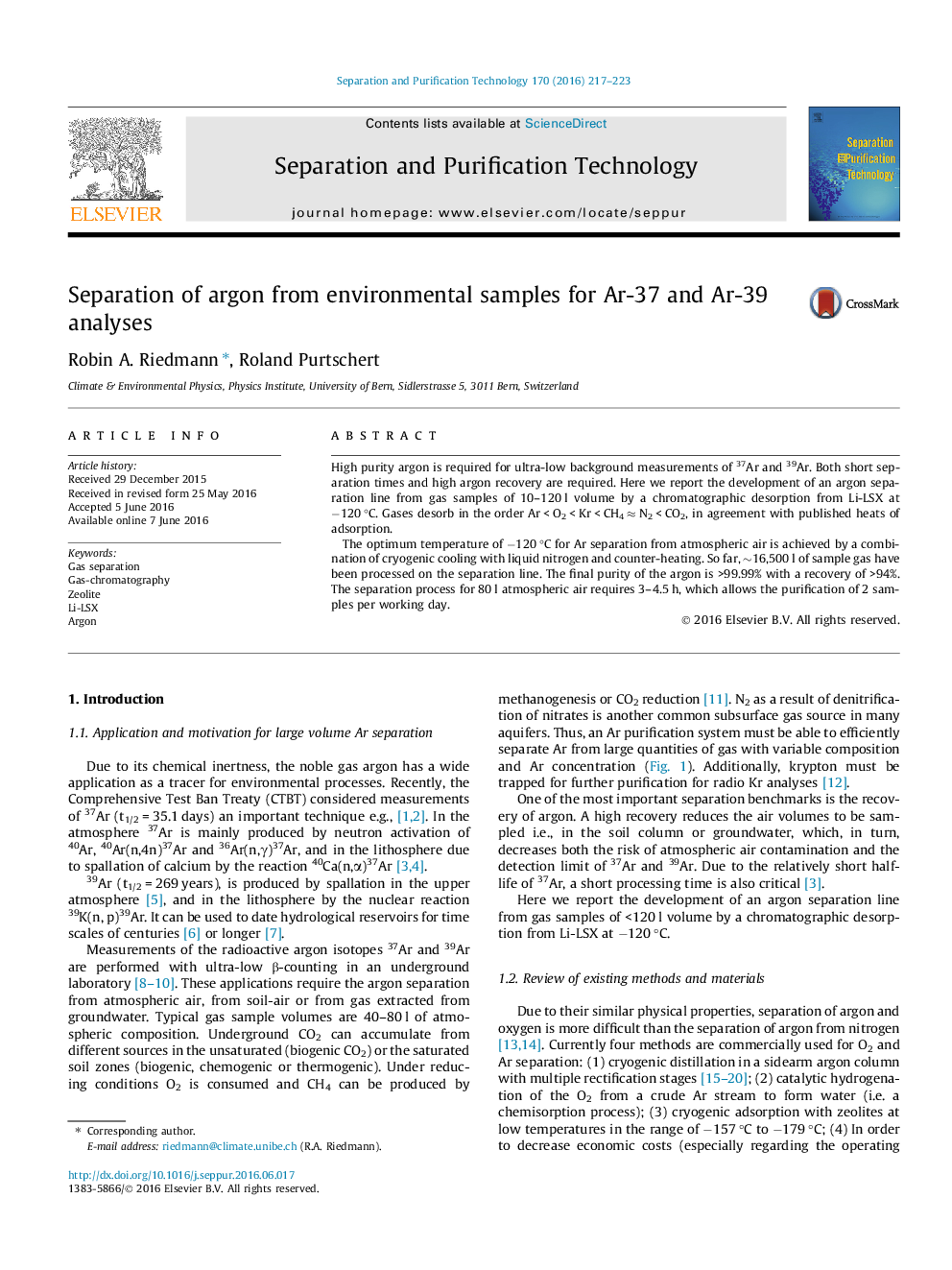| Article ID | Journal | Published Year | Pages | File Type |
|---|---|---|---|---|
| 639821 | Separation and Purification Technology | 2016 | 7 Pages |
•High purity argon is required for ultra-low background measurements of 37Ar and 39Ar. Both short separation times and high argon recovery are required. Here we report the development of an argon separation line from gas samples of 10–120 l volume by a chromatographic desorption from Li-LSX at −120 °C. Gases desorb in the order Ar < O2 < Kr < CH4 ≈ N2 < CO2, in agreement with published heats of adsorption.•The optimum temperature of −120 °C for Ar separation from atmospheric air is achieved by a combination of cryogenic cooling with liquid nitrogen and counter-heating. So far, ∼16,500 l of sample gas have been processed on the separation line. The final purity of the argon is >99.99% with a recovery of >94%. The separation process for 80 l atmospheric air requires 3–4.5 h, which allows the purification of 2 samples per working day.
High purity argon is required for ultra-low background measurements of 37Ar and 39Ar. Both short separation times and high argon recovery are required. Here we report the development of an argon separation line from gas samples of 10–120 l volume by a chromatographic desorption from Li-LSX at −120 °C. Gases desorb in the order Ar < O2 < Kr < CH4 ≈ N2 < CO2, in agreement with published heats of adsorption.The optimum temperature of −120 °C for Ar separation from atmospheric air is achieved by a combination of cryogenic cooling with liquid nitrogen and counter-heating. So far, ∼16,500 l of sample gas have been processed on the separation line. The final purity of the argon is >99.99% with a recovery of >94%. The separation process for 80 l atmospheric air requires 3–4.5 h, which allows the purification of 2 samples per working day.
